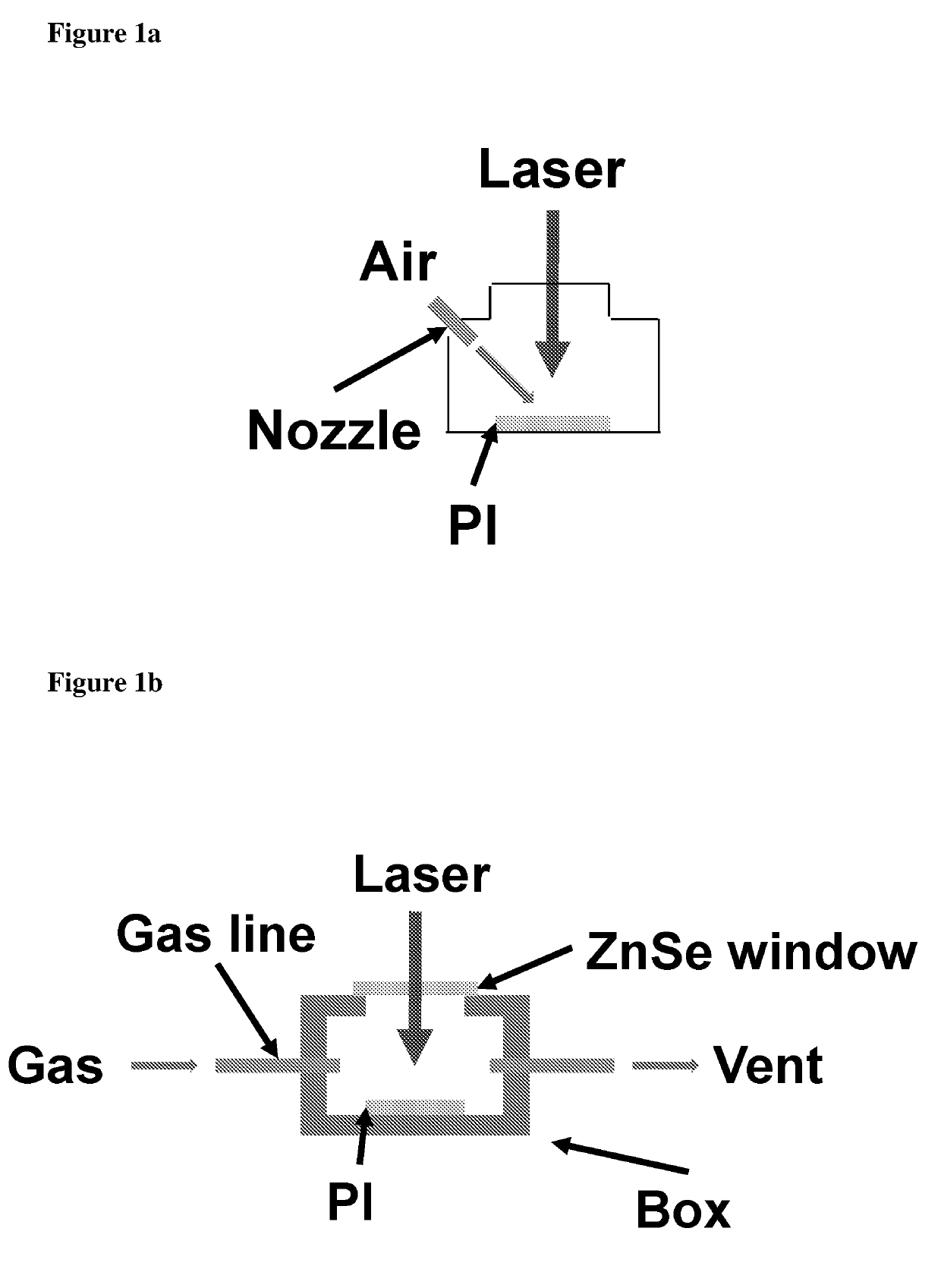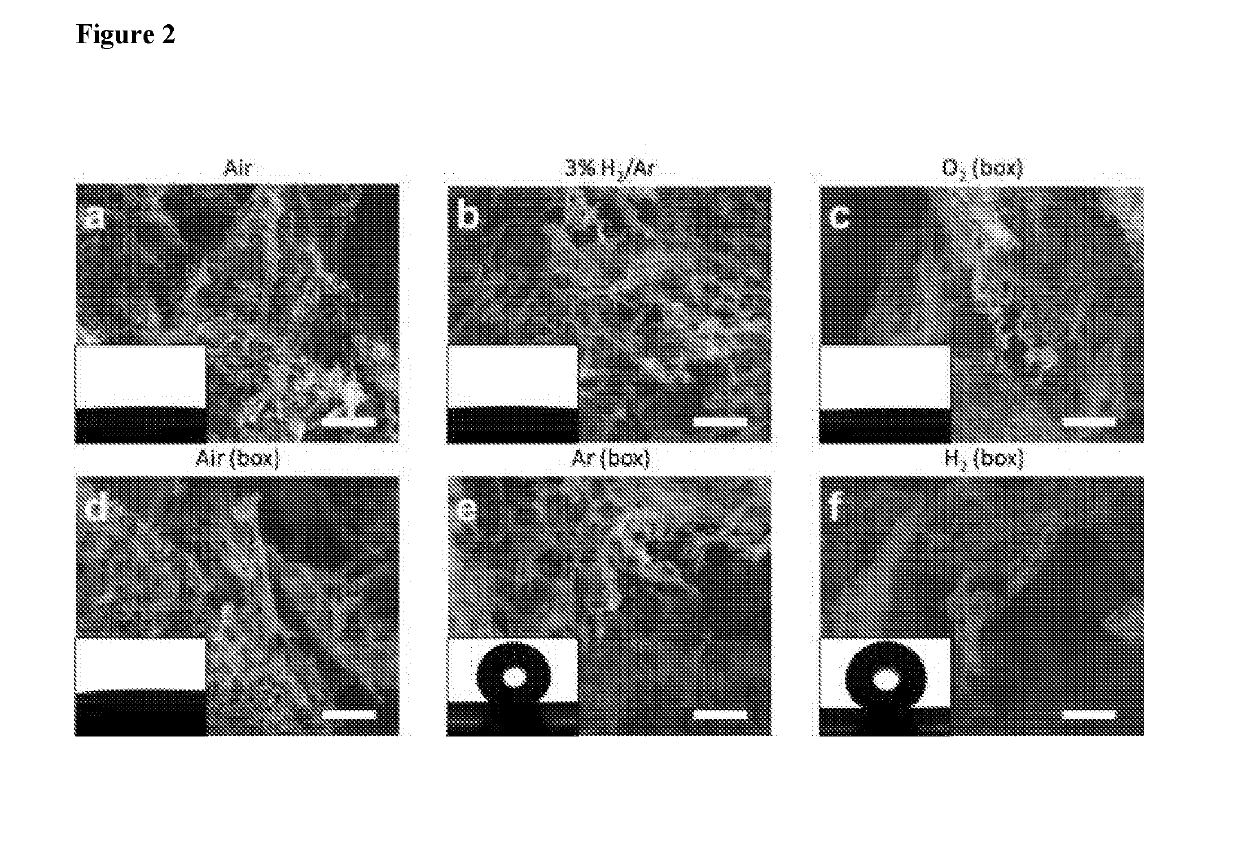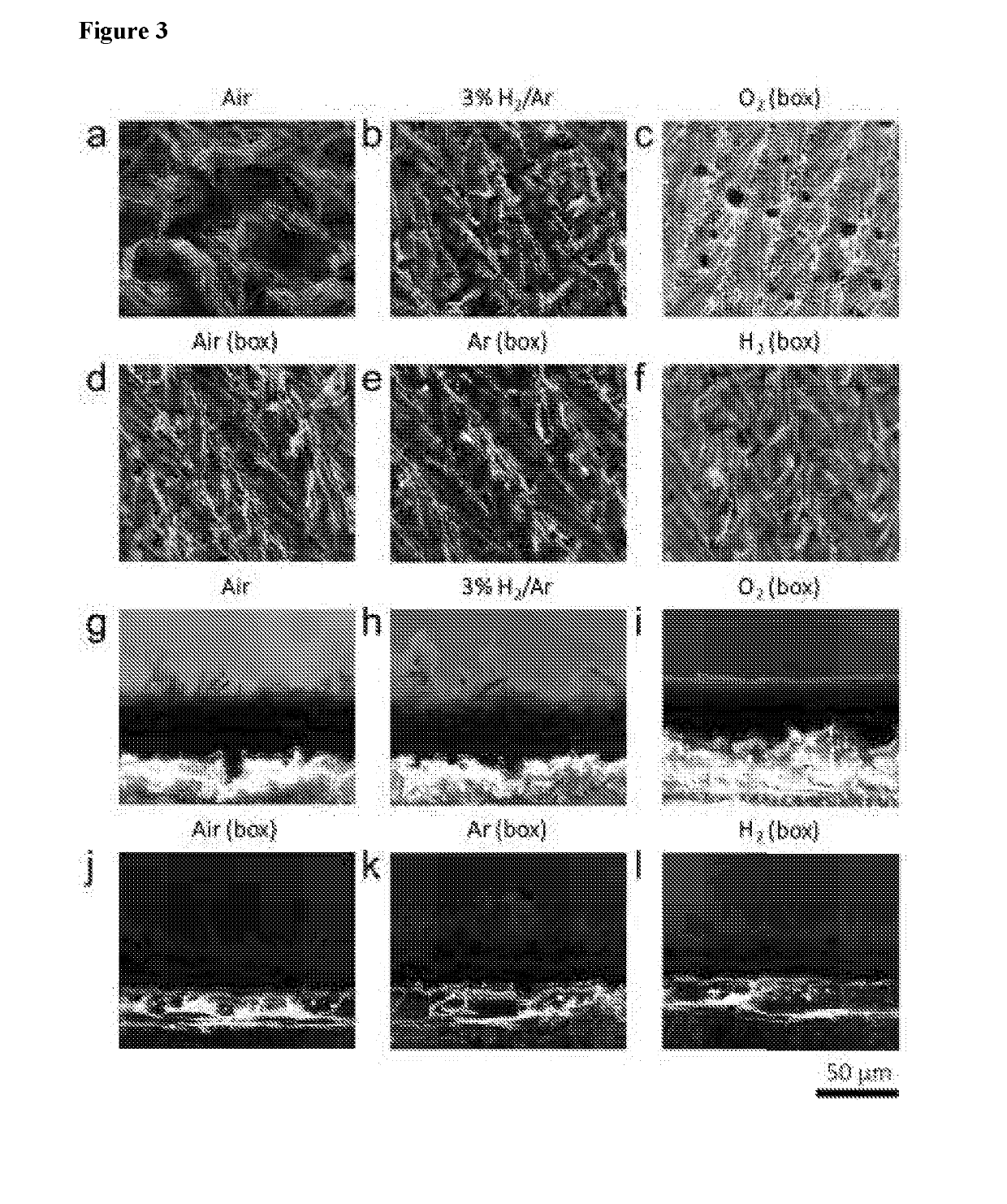Antibiofilm and antimicrobial functional membrane spacer
a functional membrane and antibacterial technology, applied in the field of surface pollution prevention, can solve the problems of biofilm formation on the spacer, or on the membrane, and have not yet been addressed
- Summary
- Abstract
- Description
- Claims
- Application Information
AI Technical Summary
Benefits of technology
Problems solved by technology
Method used
Image
Examples
example 1
acterial Killing of Laser-Induced Graphene Fabricated on Polyimide
[0080]A contact killing assay was adopted to examine the bactericidal properties of LIG formed under different fabrication conditions. The assay measured bacterial viability after bacteria were incubated on the surface. For example, such methods have been used to elucidate antimicrobial activities of graphene oxide, previously reported in literature (Castrillón et al., 2015, Environ. Sci. Technol. Lett., 2015, 2 (4), pp 112-117, Interaction of Graphene Oxide with Bacterial Cell Membranes: Insights from Force Spectroscopy).
[0081]The samples that have been tested are summarized in the Table A below.
TABLE AContactSample IDVacuum BoxGasAngleRemarksEL 3-117 INoAir‡134°HydrophilicLIG / air assistEL 3-117 IIINo3% H2 / Ar‡147°HydrophilicLIG / 3% H2 / Ar assistEL 3 117 IVYesH2†139°HydrophobicLIG / H2 (box)EL 3 117 VYesAr†140°HydrophobicLIG / Ar (box)EL 3 117 VIYesAir‡146°HydrophilicLIG / air (box)†by water drop‡by captive bubble
[0082]A sing...
example 2
rowth Assay of Laser-Induced Graphene Fabricated on Polyimide, Short-Term and Long-Term Studies
[0084]The antibiofouling and antibiofilm properties of LIG were observed in a flow cell experiment. The setup for this experiment is seen in FIG. 11, comprising nutrient media, a pump (designated as “Flow cell pump”) and flow cell chamber, which contains the samples attached to a glass slide (designated as “Flow cell in which samples are inoculated”).
[0085]The control polyimide, and / or graphite, and LIG samples were attached to glass slide with double sided tape and were placed inside the flow cell. In general, the samples were inoculated by flowing 50 ml bacteria culture through the flow cell at 2.5 ml / min, followed by up to 96 hours and up to 14 days, of nutrient media. Different experiments were conducted with three different types of bacteria with slightly different variations as detailed below.
[0086]1. Pseudomonas aeruginosa was cultured as in example 1 above. A 50 ml culture of these...
example 3
Toxicity of LIG Particles
[0106]Toxicity assays were performed using the LIG as made for the spacer grid (image density of 8 (1000 pulses per inch), scan rate (rastering speed) of 10% (6 inch / s), 2% power, and 100% air assist were used) as fabricated on the PI surface, and compared to LIG powders, made by scraping the same LIG layer from the surface. LIG powders with small and large particle size were prepared by sonication of scraped LIG, which resulted in average particle sheet areas of 0.09 and 0.55 μm2 using AFM, respectively.
[0107]LIG powder was made by scraping the LIG from the PI surface. Different LIG powder size distributions were obtained by probe sonication of scraped LIG. Briefly, a stable suspension of LIG powder (2.0 mg mL−1 in DI water) was made by immersion in a bath-sonicator (D-74224, Elma Singen) for 30 min. This suspension was then probe sonicated in an ice bath for 120 min at high-intensity (VCX130, Sonics Vibra-cell) for smaller sizes.
[0108]A sample of the small...
PUM
| Property | Measurement | Unit |
|---|---|---|
| electrical potential | aaaaa | aaaaa |
| electrical potential | aaaaa | aaaaa |
| electrical potential | aaaaa | aaaaa |
Abstract
Description
Claims
Application Information
 Login to View More
Login to View More - R&D
- Intellectual Property
- Life Sciences
- Materials
- Tech Scout
- Unparalleled Data Quality
- Higher Quality Content
- 60% Fewer Hallucinations
Browse by: Latest US Patents, China's latest patents, Technical Efficacy Thesaurus, Application Domain, Technology Topic, Popular Technical Reports.
© 2025 PatSnap. All rights reserved.Legal|Privacy policy|Modern Slavery Act Transparency Statement|Sitemap|About US| Contact US: help@patsnap.com



